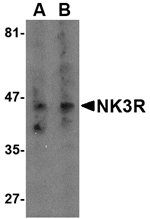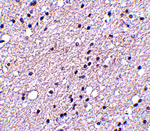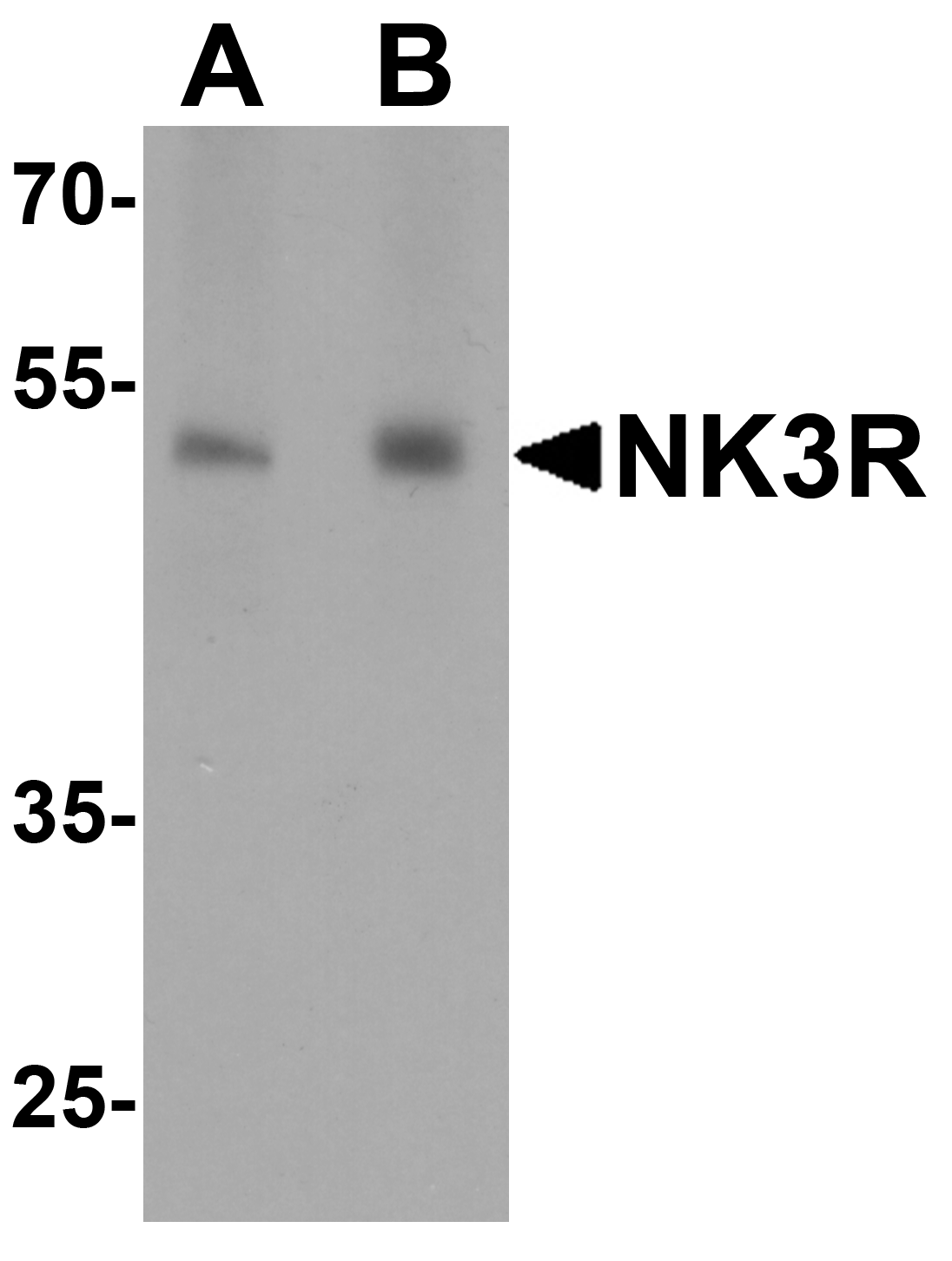The tachykinins are a family of small peptides that include the neurotransmitters substance P, neurokinin A, and neurokinin B, which can act on three related but distinct seven transmembrane G-proteins coupled receptors, albeit at different concentrations. The NK-3 receptor (NK3R) has greatest affinity for neurokinin B and is highly expressed in the supraoptic and paraventricular nuclei. Following binding of its ligand, NK3R activates a phosphatidylinositol-calcium second messenger system. It is likely these signals lead to the release of vasopressin and oxytocin into the circulation. NK3R may be involved in learning and memory as mice lacking this gene expressed cognitive deficits compared to normal mice. Although it has been suggested that NK3R plays a role in the regulation of vagal afferent relay neurons, it is likely that these receptors are activated by substance P or neurokinin A, as the airway nerves do not express neurokinin B. NK3R antibody does not recognize NK1R or NK2R.



